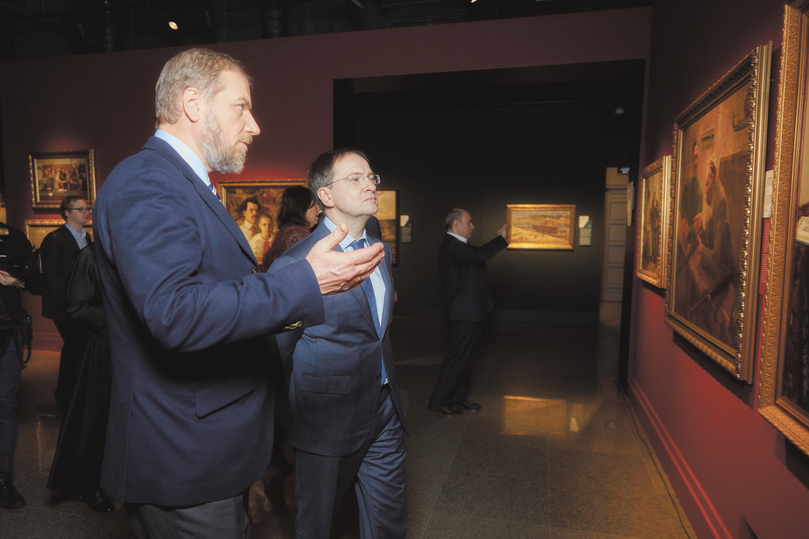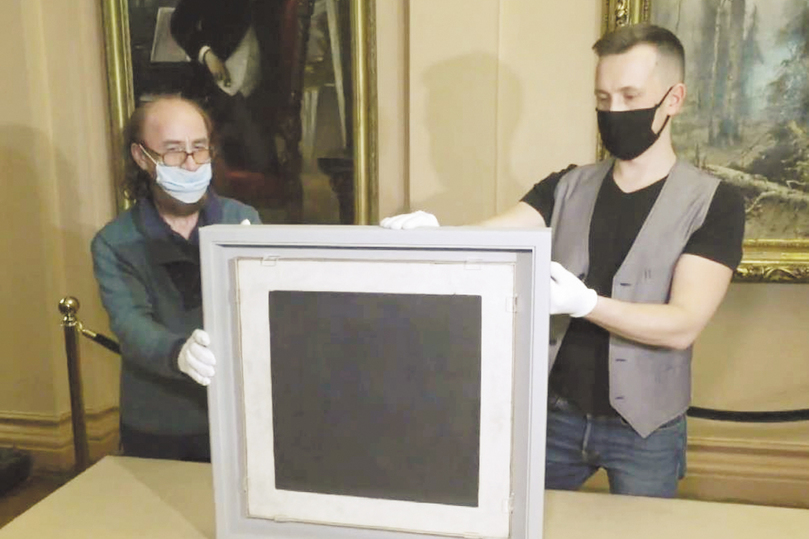The detention of Yevgeny Roizman was the reason for discussing the mechanism for preserving private museums
[ad_1]
Immunity for Prisoner Masterpieces
The detention of Yevgeny Roizman, who is charged with an article on discrimination against the Armed Forces of the Russian Federation (part 1 of article 280.3 of the Criminal Code of the Russian Federation), made people talk about the fate of his Museum of the Nevyansk icon. Aleksey Venediktov (recognized as a foreign agent) even cited in his telegram channel quotes from a conversation with a certain person in uniform, from which it follows that the real reason for the detention was a unique collection of icons, which allegedly someone “coveted”. It is unlikely that this is true, but there is reason to talk about the fate of private museums in situations where their owner “dropped out of the game.”
There are not so many private museums in Russia with large quality art collections – we can confidently name eight. The Nevyansk Icon Museum is the first private icon museum in Russia, it was founded in 1999. In art history circles, the collection is highly valued. It is one of a kind, experts say. Yevgeny Roizman faces up to three years in prison. Let’s say the court delivered a guilty verdict, and relatives are not able to maintain a museum with more than 700 unique exhibits that the politician has been collecting for more than 40 years. What’s next?
I remember the recent dramatic example of the Institute of Russian Realist Art (IRRI), whose owner Alexei Ananiev was put on the international wanted list in 2019, and all his property in Russia, including paintings (more than 500 works), was arrested. Let’s leave out the sins of a businessman before the law, here we are talking about something else. There was a wonderful museum – and sunk into oblivion. But it would be possible to preserve the cultural platform, experts believe, if the state took upon itself the burden of maintaining the museum and could ensure the continuation of its work. The idea of ”immunity” for private museums began to be discussed after the scandal around Ananiev and is becoming more and more relevant.

“If a person has created a fully functioning cultural institution, then it is necessary to find a way to preserve it,” says art critic, researcher at the State Institute of Art Studies Inna Pulikova. – It would be possible to introduce some kind of special status for such museums that were left “without an owner” – to develop a mechanism for “immunity” from closure. After all, a high-quality private art museum is the same cultural asset as works from state museums included in the museum fund of the Russian Federation, and it would be possible to find opportunities and invent legal instruments so that private museums continue to be accessible to the public, regardless of the life situation of the owners.
Last year, at the annual scientific conference from the Sorokin Readings series, Inna Pulikova made a presentation entitled “Private Collecting. Charitable and Sponsorship Practices”, where she outlined the problem. As the most striking example, she cited the fate of the Inkombank art collection, which was sold at the Gelos auction in 2002, and the amount received for the works was much less than experts expected. Thus, Kazimir Malevich’s “Black Square” (at that time the only one of the author’s repetitions that remained in private hands) was withdrawn from the auction by the decision of the Ministry of Culture of the Russian Federation and sold for $ 1 million (with an estimate of $ 10 million by experts) to Vladimir Potanin, who immediately handed over a masterpiece as a gift to the Hermitage. In this case, the state influenced the situation and made the masterpiece available to the public, but cunningly: a specific person “fitted in” for a specific fashion item.

“Currently, unfortunately, there is no mechanism for the legal protection of private museums, which means that their fate directly depends on the fate of their owners, founders, often part-time owners of collections,” lawyer Yulia Verbitskaya tells MK. – In the event of death, bankruptcy or other property problems of the owner (founder), the entire collection, from the point of view of the Civil Code of the Russian Federation, is only property that can be arrested and which can be seized in court, which, in turn, means a sale by object works at auctions organized by bailiffs. From this moment on, the collection in a single form, of course, ceases to exist. However, there are a number of private collections, as well as a number of private museum institutions, which are of cultural value to the state and whose “dispersal” is contrary to public interests. It is for such generally recognized assemblies introduced into scientific circulation that special immunity should be provided for at the legislative level. As the simplest measure, one can assume the purchase of this collection by the state based on the results of an independent assessment. In this case, there are no issues with the status of ownership, and the collection acquires the status of state property and, accordingly, immunity.
— What if the purchase of the collection by the state is impossible for some reason?
“Then the state could give the collection the status of a specially protected object and give an option to another person to pay the costs, the right to own the collection and exhibit it until the owner repays all his obligations. This option may have a validity period, for example, 5 years, after which a mechanism should be provided for the redemption of this collection as a whole by private individuals on a competitive basis. In this case, the new acquirer will have to be subject to security restrictions. For example: do not sell the collection in parts, keep it in the proper form, provide access to it. This measure, of course, will limit the rights of the current owner and some of his creditors. However, the balance of interests between the private and the public is achieved through the social significance and cultural significance of the collection as a single object. Probably other compromises are possible.
Obviously different. That without the existence of a special mechanism of legal protection, cases like the “case of the Institute of Russian Realist Art” will be repeated, and carefully selected and culturally important collections will be “dispersed” and “dissolved” without a trace, and this, by the way, is a violation of the rights and obligations of the state to ensure the protection of heritage and cultural property.
Newspaper headline:
Immunity for Prisoner Masterpieces
[ad_2]
Source link






